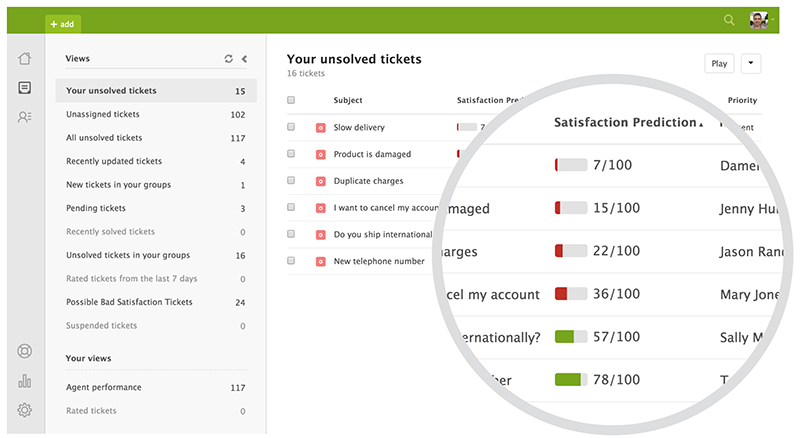Machine learning to drive customer service software

If a customer service ticket has the words “late”, “damaged” or “vomit” in it then is fairly easy to predict you’re dealing with an unhappy customer.
But how can you identify those tickets and intervene on mass?
Cloud-based software provider Zendesk has launched its “satisfaction prediction” — machine learning and predictive analytics feature for customer satisfaction. The enterprise solution leverages machine learning to predict how likely a ticket is to receive a good or bad rating, so organisations can intervene to ensure positive outcomes.
Since launching in beta five months ago, satisfaction prediction has analysed more than 1.82 million customer interactions.
Social media platform Pinterest has deployed Zendesk’s satisfaction prediction to detect which conversations with customers are most at risk of a poor experience.
“Previously, we had a manual process where a dedicated team member would look through our tickets and proactively flag experiences identified as potentially negative,” said Maggie Armato, reactive support lead at Pinterest.
“Now, we use the prediction score to accurately and automatically identify these types of tickets so our agents can focus on higher value areas.”
Satisfaction prediction uses machine learning to read and transform hundreds of signals including text description, number of replies and total wait time into a unique model that dynamically calculates how likely a customer is to provide a positive satisfaction rating. This rating allows agents to prioritise workflows, drive business rules, or trigger downstream integrations based on data-driven analysis.
“Customer relationships have become increasingly complicated with the rise of communications across mobile, social, and everywhere in between,” said Adrian McDermott, SVP product development at Zendesk.
“We designed satisfaction prediction to help businesses navigate these complex relationships by bringing data into the equation. By having an early warning system that identifies high-risk interactions, companies can course-correct negative experiences before they ever even happen.”
Comment Manually
You must be logged in to post a comment.



No comments